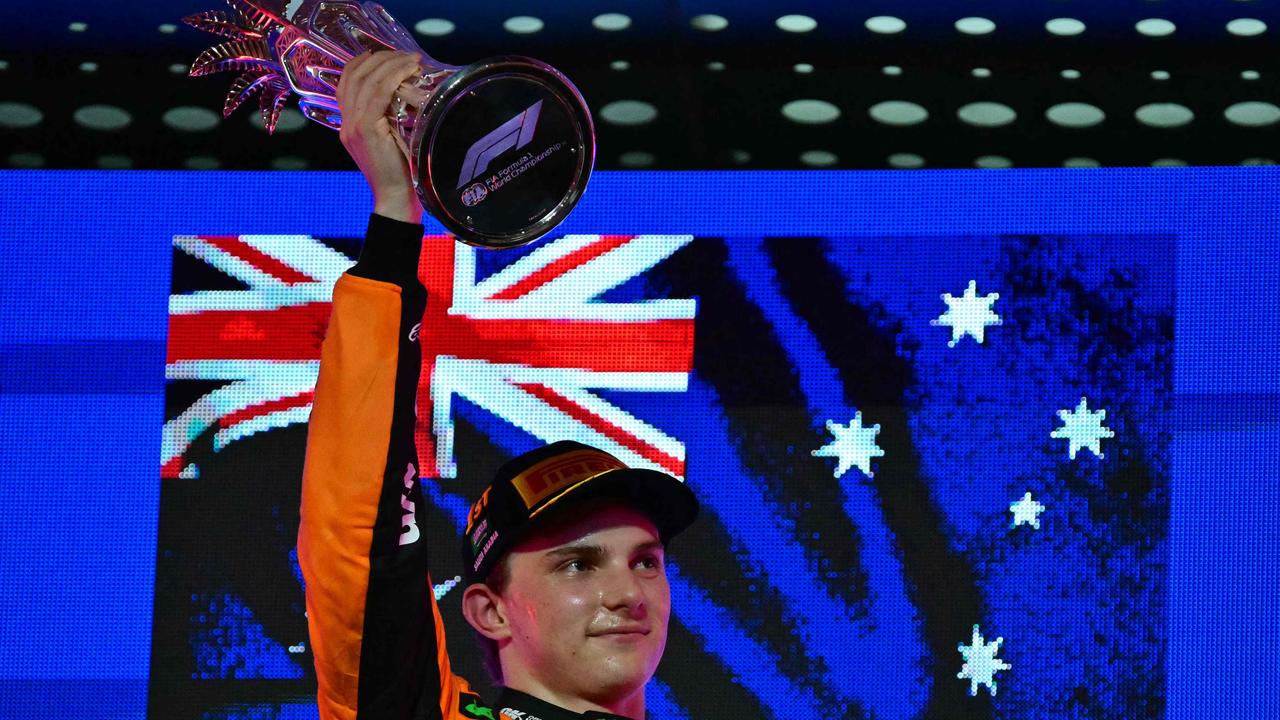Eternity’s Gate director’s risks pay off
At Eternity’s Gateextends director Julian Schnabel’s resume of having created three exceptional films to now, four.

The Oscar night organisers will need to be careful in choosing the best actor clips when it comes to Willem Dafoe as Vincent van Gogh in At Eternity’s Gate. They best show his face, which looks uncannily like Van Gogh’s, and not his hands at work on a canvas.
The hands may be his, or they may be the director’s. American artist and filmmaker Julian Schnabel, who taught Dafoe, his friend of 30 years, to paint for this movie, also put his own mitts in front of the camera for the close-up brushwork moments.
In one sense that directorial sleight of hand is perfect for this unusual and fascinating film, one that Schnabel is first to admit is not a traditional cradle-to-grave biopic.
The story is based mainly on Van Gogh’s letters, which Dafoe immersed himself in. Is the Dutch post-impressionist a reliable narrator? Well, how can we know?
The focus is on the final years of his life, including when he, and for a time Paul Gauguin, lived at the now famous Yellow House in Arles, in the south of France. It moves from Arles to Auvers-sur-Oise, on the outskirts of Paris, where Van Gogh died of a gunshot wound in July 1890, aged 37. Between the two places there was also time in a psychiatric hospital.
“This is a film about painting,” Schnabel said in one interview. “And a painter and their relationship to infinity.” That’s an interesting choice of words: painting comes first.
Yet what emerges in At Eternity’s Gate is one of the more empathetic takes on Van Gogh, the man, in the gallery of movies about him, including the one we all remember, Lust for Life (1956), with Kirk Douglas in the lead. The one that came strongest to mind as I watched, however, was Paul Cox’s Vincent (1987).
Schnabel takes some interesting cinematic gambles to put us inside van Gogh’s undiagnosed head, including using fast, erratic queasy-cam shots, blurring part of the screen as we look through Van Gogh’s eyes and repetition of words to suggest he is hearing voices.
When we are out of Van Gogh's head, in the golden landscapes he painted, the camerawork by French cinematographer Benoit Delhomme is an artwork on its own. This is strikingly so early on when Van Gogh, on the advice of Gauguin (Oscar Isaac), flees the smog of Paris to paint in sunlight. We see him as a small, mute figure in a vast, beautiful space. He has the financial and emotional support of his brother Theo (Rupert Friend) and the scenes between them are touching.
When Van Gogh does start talking we get a glimpse of what is going on in his mind. Here there are no cinematic bells and whistles, just an actor and a camera. Dafoe, a fine actor for the past 40 years (I will name one role, as the thumbless thief Caravaggio in The English Patient), does not play Van Gogh, he becomes him. That, too, is a work of art and he deserves the Oscar nomination.
“There’s something inside me,” Van Gogh says at one point. “I don’t know what it is. What I see nobody else sees.”
Empathy does not mean hagiography, a distinction perhaps well understood by an artist. There are scenes that suggest a darker side to Van Gogh. The notorious lopping of an ear, naturally, but also less dramatic ones when he gets uncomfortably, perhaps dangerously, close to other people. Schnabel has a different take on Van Gogh’s death, one that is shared by others who have studied his final days.
There is also a tension in how close the artist is to himself. At times he thinks he is Jesus (who, as it happens, Dafoe was in The Last Temptation of Christ). In a tight, revealing scene at the hospital he has a Christ-Pontius Pilate exchange with a priest (Danish actor Mads Mikkelsen).
What the priest does with one of the patient’s paintings is a moment worth waiting for, not least because you will wonder if Mikkelsen made it up on the spot.
Schnabel, best known as an artist, has made three previous films. The first two, Basquiat (1990), also about a painter, and Before Night Falls (2000), which won Javier Bardem an Oscar nomination, are extraordinary. The third, T he Diving Bell and the Butterfly (2007), is a masterpiece. (Its star, Mathieu Amalric, is Dr Gachet in the new film.) At Eternity’s Gate extends Schnabel’s run to four from four. Immediately after seeing it I spent an afternoon reading up on Van Gogh. Hard to ask for more than that.
We all know Van Gogh sold only one painting while he was alive. His record price to date is $US82.5 million in 1990 for Portrait of Dr Gachet.
The difference between knowing this and seeing the works being painted by the artist — and then sitting on a wall in his house, or the house of a friend — goes to the heart of this film.
Van Gogh is at eternity’s gate when he is alive and unwanted. He is not yet in eternity but he suspects it is there.
“Maybe,” he says, “God made me a painter for people who aren’t born yet.”

I know I run the risk of doing myself out of a job here, but I increasingly think it’s best to see a movie without knowing much about it. The new Liam Neeson comedy-thriller Cold Pursuit is a fine case in point.
The Irish star has been in the news for making comments, in passing reference to the plot of this movie, that are seen as racist. I will leave that to others to debate. Today I want to talk about the movie, which was a pleasant surprise to me.
Having seen the trailer (something else I try not to do in general), I went in thinking this would be another vigilante movie similar to the Taken series that Neeson has cruised through in recent years.
On one level it is, but there are lots of other levels at work, too. At its best, this is an edgily clever take on the sort of movies we associate with the Coen brothers and Quentin Tarantino. Having mentioned them, I should note that when I say comedy-thriller I mean black comedy. I laughed much more than I expected to.
There is perhaps a hint to this in the quote that appears before the movie starts. It’s from Oscar Wilde. We then meet Nelson Coxman (Neeson), a man of few words who works as a snow plough driver in a fictional Colorado ski town. He has just been named citizen of the year. If you are wondering whether his name comes from his time shouting at a rowing crew in a warmer climate, stop now. The anatomical jokes are soon to come.
While the Coens and Tarantino do lurk in the background, this movie, directed by Norwegian filmmaker Hans Petter Moland, is first of all an English language remake of his 2014 thriller In Order of Disappearance. The Neeson character in the original, played by Stellan Skarsgard, was named Nils Dickman.
The set-up is not dissimilar to a Taken movie. Coxman’s 20-something son Kyle (Micheal Richardson, son of Neeson and Natasha Richardson) is pushed into a van by some bad dudes. What happens next is terrible. Soon Coxman is on his own, his wife (an underused Laura Dern) having walked out in despair. He becomes hellbent on an extrajudicial mission to deal with the bad dudes.
That Coxman is a silent man works perfectly. While Neeson is the star, other actors grab and hold the attention, particularly Tom Bateman as a Denver-based drug lord, Emmy Rossum as the local police officer, in a clear nod to Frances McDormand’s character in the Coens’ Fargo, and Tom Jackson as a Native American chief named White Bull.
White Bull is part of the surprise of this movie. Suddenly we don’t just have a father taking on a white drug lord and his henchmen but also a rival criminal gang, made up of the local Native Americans who at times make Tony Soprano look tame.
Yet, like Coxman, White Bull has a son. So does the Denver drug lord, who is known as Viking. He is fastidious to the point of violence about diet and grammar. He is backed by Shiv, Windex, Speedo and so on. So there is humour in the names of the gang members, and then there are unexpected developments in what they do when the boss isn’t looking.
All of this comes together in a fast-paced, intelligent and comic (for certain senses of humour) fashion while not losing sight of the overall father-son justice-revenge story. The final scene is a deliberate tribute (if that’s the right word, given what happens) to Fargo and it may leave you laughing despite your better judgment.
At Eternity’s Gate (PG) 4 stars
National release
Cold Pursuit (MA15+) 3.5 stars
National release




To join the conversation, please log in. Don't have an account? Register
Join the conversation, you are commenting as Logout